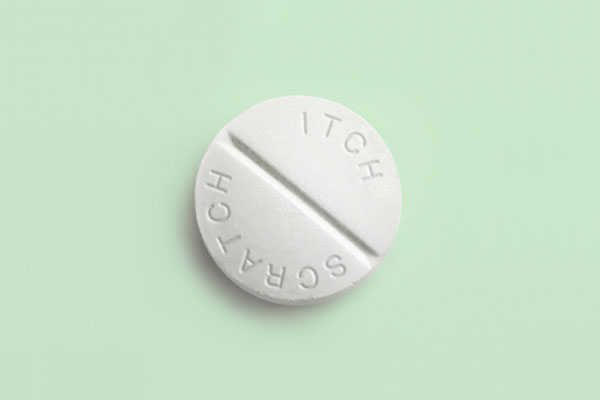If the subject of itch seems frivolous compared to other medical matters, consider this: in regions where the drug chloroquine is used to treat malaria, patients often discontinue treatment rather than endure the excruciating itch that comes as a side effect. And case studies tell of itch sufferers who injure themselves in search of relief; in one well-documented case, a woman scratched through her skull and into her brain tissue in her sleep.
Still, the subject of itch was ignored in favor of pain studies for decades, says HHMI early career scientist Xinzhong Dong, a neuroscientist at the Johns Hopkins University School of Medicine. Attention to the field is increasing now, thanks in part to Dong's work unraveling the puzzling pathways that carry certain itch sensations from the skin to the brain.
In collaboration with HHMI investigator David Anderson, a neuroscientist at the California Institute of Technology, Dong identified a protein that functions as an itch receptor in a small subset of nerve cells. The scientists reported the research in the December 25, 2009, issue of Cell.
Allergic itch happens when cells in the immune system release the chemical histamine. It is easily treated with antihistamines, which lessen itch by binding to histamine receptors on the surface of sensory neurons. But allergic itch accounts for only one-third of all types of itch.
Other forms of itch—including the kind caused by chloroquine—don't work through histamine receptors, so antihistamines are ineffective. Lacking a better option, physicians usually treat nonallergic itch with steroids, which, if used for long, can have dangerous side effects, including eye disease, osteoporosis, and gastrointestinal illness. The search for alternative treatments has been complicated by the absence of a known receptor.
Nearly a decade ago, when Dong was a postdoc in Anderson's lab, he stumbled on a class of receptors called Mrgprs. A subset of these receptors was found almost exclusively on a class of sensory neurons thought to be involved in the sensing of pain.
Dong and Anderson first presumed that the Mrgprs, too, were related to pain. “At the time, we had no inkling of itch,” he says.
To determine the role of the receptors, the scientists engineered a line of what Anderson calls “super-knockout” mice lacking 12 genes coding for receptors in the Mrgpr family.
They expected the mice to be less sensitive to pain than normal mice, but the mice lacking the Mrgpr genes appeared suspiciously normal. “What was striking was that there was very little wrong with these mice,” recalls Anderson. They showed virtually no difference in their response to pain, compared with normal mice.
Years later, Dong was inspired by studies conducted by Zhou-Feng Chen, another former postdoc from Anderson's lab who is now at the Washington University School of Medicine, on how neurons deliver itch sensations to the brain. Dong returned to the Mrgpr-knockout mice with a new question: would they show any deficits in their itch responses?
The researchers first injected itch-inducing histamine into the mice. Both the normal and knockout mice behaved similarly, scratching furiously. But when the researchers injected chloroquine, the mice lacking Mrgpr genes scratched less—nearly three times less often than normal mice.
“Now, we think these receptors function as novel itch receptors, like the histamine receptor,” says Dong.
It can't be said yet whether the receptors respond to other forms of nonallergic itch, like that associated with psoriasis or poison ivy; Dong's lab is testing that question. But the discovery helps get to the root of a sensation about which there's heated debate, says Dong.
“Some people propose that itch is the little brother to pain,” explains Dong. “If you get a little bit of the sensation, you get the itch, if you get a lot, you feel pain.” Another possibility is that there are distinct nerve cells—those dedicated to itch, different ones for pain, and others for ordinary touch.
Dong proposes a third view. “We think that these two circuitries are not really separate, but the pain circuitry is much larger. If you activate a large population of pain-sensing neurons, you get pain. The itch-sensing neurons reside within a subset of pain-sensing neurons, and if you activate them specifically you get itch sensation,” he says.
“The big prize here would be to find the population of neurons that respond to multiple nonhistaminergic, itch-inducing compounds and find a drug that shuts those cells down,” says Anderson.
And he has a daily reminder of the relief that such a drug could bring: his cat. “She has a chronic itch problem; she just tears acres of fur off her head and her neck,” he says. The only treatment is steroids, and Anderson's veterinarian has warned that continued steroid exposure could create its own health issues for the animal. “People have underestimated the importance of itch because it's not a life-threatening condition like cancer or Alzheimer's disease. But it has a huge impact on the quality of life.”








